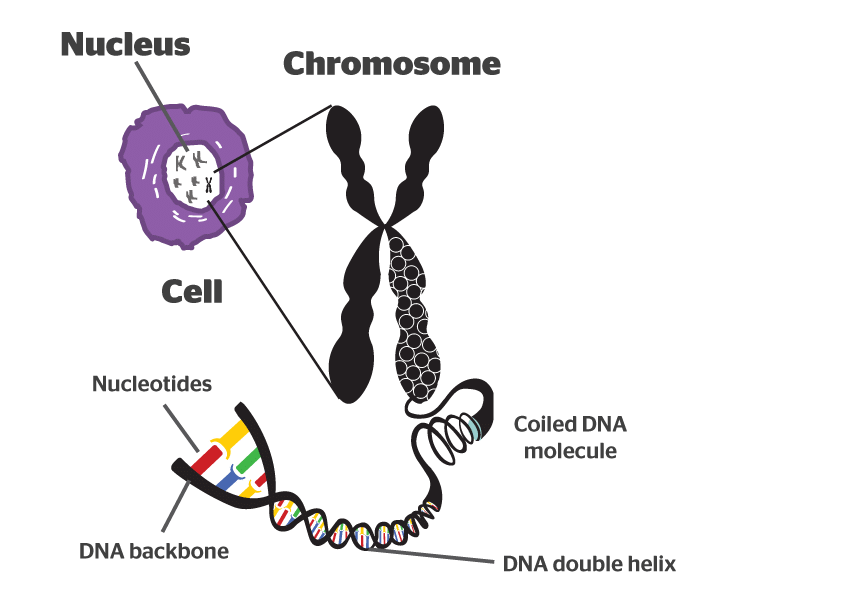Chromosome - Class 8 PDF Download
Needed a Video for science chapter 8 about where chromosomes found in a cell? I want that what is chromosomes,where are chromosomes found in a cell and what is their function?
Ref: https://edurev.in/question/548763/Needed-a-Video-for-science-chapter-8-about-where-chromosomes-found-in-a-cell-I-want-that-what-is-chr
Chromosomes are thread-like structures woven together. We have all seen Spiderman. When the credits roll, one can see numerous thread-like structures tangling and detangling in sober colors of red and blue, breaking to form names. Chromosomes are a lot like these thread-like structures, although a lot less flamboyant. They are located inside the nucleus of animal and plant cells.
Each chromosome happens to be made of proteins and a single molecule of deoxyribonucleic acid or commonly abbreviated to DNA. They are passed from parents to offspring, over generations. DNA contains the specific instructions that make each type of living creature different from the other. It ensures that we remain unique. The term chromosome is derived from the Greek words for the color called chroma and body which is soma. Scientists have given this name to chromosomes because of the structure of chromosome or because they are cell structures or bodies, that are heavily stained by some colorful dyes used in research.

Chromosome
Properties of Chromosomes
Chromosomes have been defined as bundles of tightly coiled DNA located within the nucleus of almost every cell in our body. Humans have 23 pairs of chromosomes. This unique structure of chromosome keeps DNA tightly wrapped around spool-like proteins, named histones. Without similar packaging, DNA molecules would be too long to simply fit inside cells. For instance, if all of the DNA molecules in a single human cell were unwound and placed tail-to-tail, they would stretch about 6 feet. With this, one can comprehend why it has to be coiled tightly enough to fit inside.
For an organism to grow and function properly, cells must constantly divide to produce new cells to replace old, worn-out cells. Cell division is the only time one can observe chromosomes. They are a key part of the process that ensures DNA is accurately copied and distributed. But still, mistakes tend to occur on rare occasions and these occasions further lead to disorders like cancer. In humans, one type of leukemia and some other cancers are caused by defective chromosomes made up of joined pieces of broken chromosomes.
FAQs on Chromosome - Class 8
| 1. What is a chromosome? |  |
| 2. How many chromosomes do humans have? |  |
| 3. What is the function of chromosomes? |  |
| 4. Can changes or abnormalities in chromosomes lead to genetic disorders? |  |
| 5. How are chromosomes inherited? |  |














